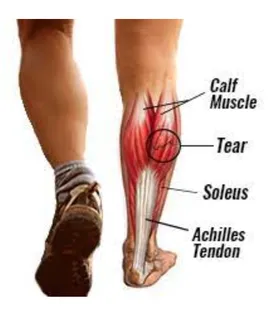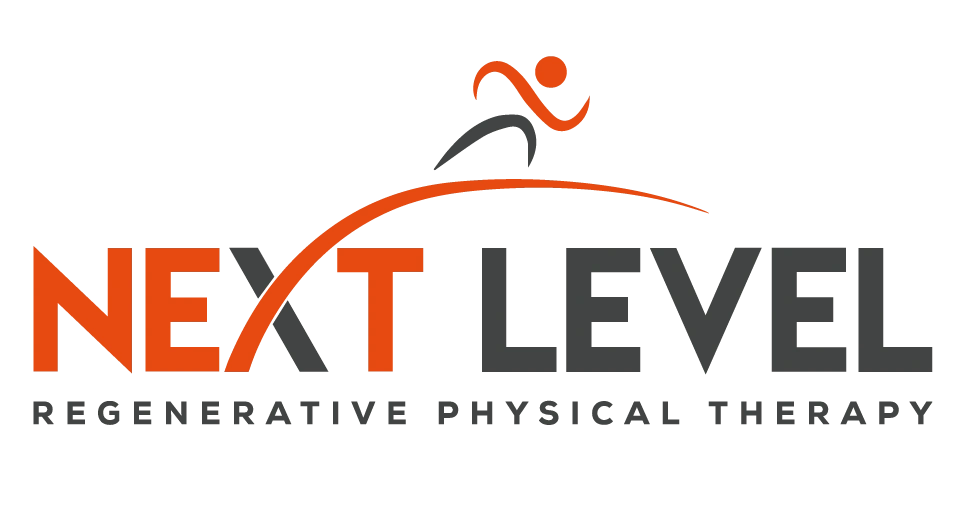A calf strain is an injury to the muscles of the back of the leg. Most commonly, calf strains are minor tears of some muscle fibers, but the bulk of the muscle tissue remains intact. More severe strains can cause a complete tear of the muscle and loss of function. It is important to be able to differentiate the difference between a muscle strain and a muscle sprain. A muscle strain involves an injury to the muscles.
A muscle sprain involves an injury to the bands of tissue that connect the two bones together. Both share similar symptoms including: A sudden pain is felt in the calf, with an audible or palpable “pop” reported in the medial aspect of the posterior calf, or you have a feeling as though someone has kicked you in the back of the leg. Substantial pain and swelling usually develop during the following 24 hours. However, the main difference is that the pain in a muscle sprain is felt in the muscle belly while a muscle strain is felt at the joint.
Not all calves are torn equally. To better understand calf injuries, we need to take a look at the anatomy. A calf muscle strain can occur to either of the two primary‘calf muscles’: the soleus or
the gastrocnemius

The gastrocnemius is the larger calf muscle, forming the bulge visible beneath the skin. The gastrocnemius has two parts or “heads,” which together create its diamond shape.
The soleus is a smaller, flat muscle that lies underneath the gastrocnemius muscle.
The lower leg is a vital component to walking especially during movements of power and endurance. The primary function of the calf muscle is for plantarflexion of the foot and ankle. This allows the push-off in walking, running, jumping, and stair climbing. More than 50% of running force propulsion is generated from the lower leg during plantar flexion. Given the force developed by the calf, it is understandable that this muscle group can be a potential site of muscular injury for an athlete, or anyone else.
Common Symptoms of a Calf Strain:
Swelling in the area of the mid calf.
Bruising in the affected area(s).
Weakness in the calf when trying to walk, climb stairs, or stand.
Limping when walking.
Unable to perform daily activities that require standing and walking.
Unable to run, jump, or put weight on the affected leg.
What Does a Calf Strain Feel Like?
Sharp pain in the back of the lower leg. The pain can resolve quickly or last for a while.
Throbbing pain at rest, with sharp stabs of pain when you try to stand or walk.
A feeling of tightness, tenderness, or weakness in the calf area.
Spasms (a gripping or severe tightening in the calf muscle).
Sharp pain in the back lower leg when trying to stretch or move the ankle or knee.
A pulling sensation at the time of injury.
A “snapping” or “popping” sound at the time of injury.
Pain in the posterior lower leg (calf area) may be contributed by other things beside a calf strain. Below is a list of a few differential diagnoses:
Chronic Exertional Compartment Syndrome (CECS)
Achilles Tendinopathy
Calf muscle tear
Calf muscle rupture
Deep Vein Thrombosis
Rhabdomyolysis
Calf muscle cancer
Classifying a muscle strain is done using the 1-3 scale with 3 being the highest degree of muscle strain. The grades are:
Grade 1. A mild or partial stretch or tearing of a few muscle fibers. The muscle is tender and painful, but maintains its normal strength. Leg use is not limited, and walking is normal.
Grade 2. A moderate stretch or tearing of more muscle fibers. The muscle is more tender, and there is pain. There is a loss of strength. Sometimes bruising will occur. Leg use is limited and limping when walking is common.
Grade 3. A severe tear of the muscle fibers. This can include a complete muscle tear. Bruising is visible. Sometimes a “dent” is noticeable beneath the skin where the muscle is torn. Leg use is extremely difficult. Putting weight on the leg is very painful.
How can you rehab a calf injury?
A calf injury can be rehabbed through time, compliance, and progressive loading. This means, settling the initial symptoms down, progressively increasing the calf musculature strength, and returning to activity. Successful rehabilitation following a strain is done through progressive strengthening which will of course take time.
If you have injured your calf muscles or are experiencing pain in the back of your lower leg, get in touch with your physical therapist in order to target the problem. Your Physical Therapist will ask a number of questions to determine if you have strained your calf and to determine how severe the damage is. Advice from your Physical Therapist on the acceptable level of activity at each stage of your rehabilitation process will be invaluable, and will assist you in returning to your activities as quickly but as safely as possible. Contact us today for a free discovery visit.

